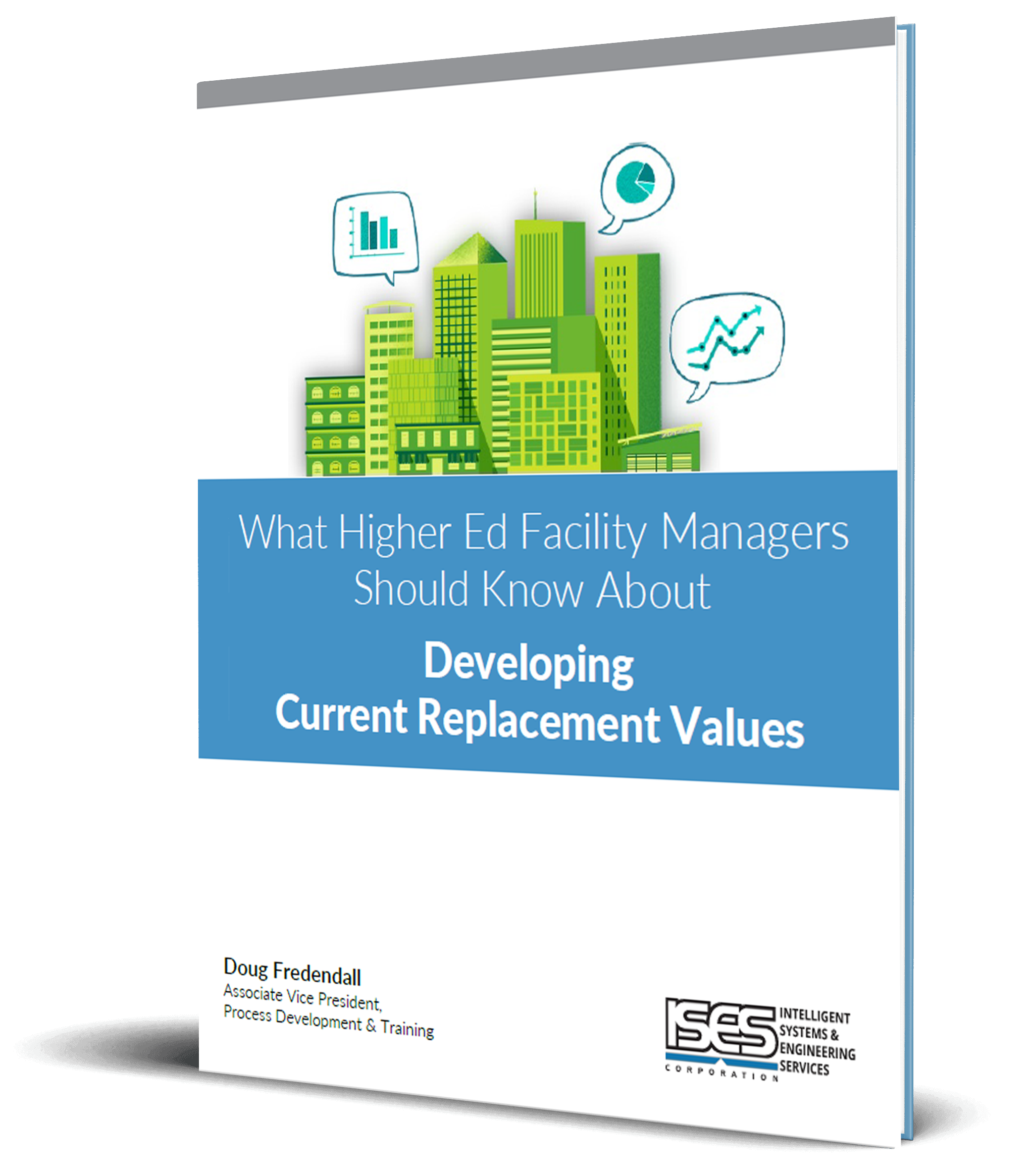This is the third in an occasional series on this topic.
We have now established that facilities renewal funding is a requirement, and deferred renewal is an all-too-constant fact of life. So, what should your renewal funding rate be? Our previous blog concluded that 2.0 to 2.5 percent of plant value is an acceptable range. But that is not always fiscally possible. What then should a facility manager do? Just give up? That’s not an acceptable option for a professional to follow, so let’s look at some guidelines for setting acceptable renewal rates.
First, let’s agree that there is not a single correct answer to the question. While a renewal rate somewhere in the range of 2.5 percent of plant value is an acceptable target, it is not the correct answer for all institutions. For you to determine your required renewal rate, it’s necessary to look closely at your existing conditions, examine your mission, and determine the ability of your facility operation to support your mission given existing conditions.
FCI vs. FCNI
Traditionally, facility owners have used a Facility Condition Index (FCI) to measure overall facility condition. This index is based on the formula:
FCI = Deferred Maintenance/Current Replacement Value
FCI has been widely applied for the past three decades, but it should not be the standard for comparing facility conditions. As discussed in a previous blog, not only is the term Deferred Maintenance misleading, but it is also missing key components. For that reason, ISES Corp prefers to use a Facility Condition Needs Index (FCNI). This measure is based on a similar formula:
FCNI = Facility Renewal Needs/Current Replacement Value
The main difference between FCI and FCNI is that the latter employs the complete renewal need for a building in the numerator. This allows you to draw realistic conclusions about relative condition of the facility because you are considering the true needs for the building, not just those components which might have already been deferred.
Implicit in the use of FCNI is a requirement to have your facility renewal needs quantified. The only true way to develop that information is through a comprehensive facility condition assessment (FCA), whether you conduct it yourself or employ a reputable vendor. The results of an FCA equip you to begin analyzing the current state of your facility portfolio and make intelligent decisions with respect to funding requirements. This need for a full FCA has recently been codified in the ANSI APPA 1000-1 standard Total Cost of Ownership for Facilities Asset Management (TCO) – Part 1: Key Principles, approved December 14, 2017.
Is Our Current Condition Acceptable?
Even after you document your renewal needs and calculate your appropriate FCNI, your work in setting renewal rates has just begun. Next you must ask yourself a basic question: Is my current condition acceptable? This seems like a simple question, but it has many subtle components. To determine whether or not your condition is acceptable, consider the following questions.
- Are my facilities adequately supporting my mission requirements?
- Does condition of facilities negatively impact the productivity of building occupants?
- How does our facility portfolio compare to my peers?
- What is the perception of facility conditions by the occupants?
- What is our threshold of pain in balancing condition against renewal rates?
These questions have both objective and subjective components, and there is not a “correct” answer for each question. Instead, they serve as guides for establishing overall relative condition ratings. Let’s briefly dig into each question, seeking guidelines for establishing your own answers.
- Are my facilities adequately supporting my mission requirements?
First, you must accurately portray your institution’s mission. Are you in the academic business, research field, or healthcare? Unless your business is providing leased space to tenants, you must first acknowledge that provision of facilities is not your mission. It is merely a supporting arm of your primary mission.
To that end, you must assess how well (or not so well) your facility portfolio enables you to carry out the primary mission of the institution. If you are a research institution and your utility systems don’t provide adequate quantities of reliable power, then you are not properly supporting the mission. If your mission is academics, are the facilities properly configured to support current instructional protocol? These types of issues must be considered in answering this first question.
- Does condition of facilities negatively impact the productivity of building occupants?
This question is a little different from the first. Your facility might be supporting your primary mission, but the condition of the facility can still negatively impact the productivity of occupants. This can vary from aesthetic issues (e.g., dismal interior conditions that depress workers) to mechanical issues (e.g., an HVAC system that is worn out and prone to failure will increase levels of discomfort in the work place, negatively affecting productivity).
- How does my facility portfolio compare to my peers?
This is both objective and subjective. On the objective side, you can compare your FCNI to peer institutions to determine if your overall condition is better or worse. Figure A provides an example of comparative data from our database of clients. Using such data, you can find where you fall within the spectrum of peer institutions.
Subjectively, you and your institution’s leaders must also rate your portfolio against peer institutions from a “feel” viewpoint. No matter what your line of business, you are always competing against another entity for resources and clients, be they students, researchers, or retail customers. If your facility is viewed as better than a competitor’s, that becomes an attractive component of your recruitment/development strategy. Conversely, a portfolio that is markedly worse will diminish your ability to attract top talent.
- What is the perception of facility conditions by the occupants?
This is a purely subjective element but is nonetheless important. If the occupants “feel good” about their workplace, they not only tend to be more productive, but are also easier to work with and support from a facilities administration perspective. If the occupants perceive that they work in substandard facilities, they will tend to be more combative when dealing with the facilities management organization, greatly increasing the burden placed on you and your staff.
- What is my threshold of pain in balancing condition against renewal rates?
This is the most important question to be answered by an organization. Not everyone can afford “world-class” facilities. Yet some activities cannot be effectively housed in mundane structures. A modern biomedical research facility should not be operated in a Butler building, a 1950s-era dormitory conversion or a former parking garage. A data center should not be maintained in a building with a perennially leaky roof. Office buildings do not have to be “Taj Mahal” type structures.
The level to which your portfolio is maintained is driven by your renewal funding levels, but this is a bidirectional relationship. The desired quality of facilities also mandates the minimum levels of renewal funding needed. It becomes incumbent upon the facility manager to determine the dominant factor: funding constraints or condition constraints. Once you establish that answer, it becomes a straightforward exercise to determine where on the funding curve you fall.
Renewal Funding vs. FCNI
Figure B provides an example of a renewal funding analysis that we have provided to numerous clients over the years. It takes your existing condition as a starting point and predicts future overall facility conditions for a variety of different renewal rates.
These predictions are based on a complex formula that was originally published in the 1991 NACUBO publication cited in previous blogs, Managing the Facilities Portfolio. This formula states that
Bn = Bn-1 * (1+in+Dn) + (Vn * Pn) - Fn
where:
- Bn is existing facility renewal backlog in year n
- in is the rate of inflation in year n
- Dn is backlog deterioration in year n
- Vn is current plant value in year n = (Vn-1 * Gn)
- Pn is plant deterioration in year n
- Fn is planned renewal funding in year n
- Gn is the assumed growth rate for facilities in year n
While this formula was developed originally for application to the FCI computation discussed earlier, it is also applicable to the FCNI calculation. However, note that the standard window for assessing backlog of facility renewal needs in the FCNI calculation is ten years. In other words, the existing facility renewal backlog is the amount that you need to spend over the next ten years. In this context, your backlog will never reach zero, as there will never be a point where you do not need to perform any renewal work within a ten-year period.
As you can see, changing the renewal investment rate impacts the resultant FCNI, which is a true measure of the condition of your facility portfolio. A comparison graph of this type will allow you to determine what funding level (or renewal rate) is necessary to reach a target FCNI. Determining your target FCNI results from exploring the five questions above.
Conclusion
After your target condition has been established and agreed to by your institution’s leadership, you can calculate the level of funding necessary to reach that condition level or to maintain your existing level if that is deemed acceptable. All that remains is the task of securing the necessary funding. Alternatively, you have the tools at your disposal to demonstrate what condition you will be able to maintain given the forced reduction in renewal rates as a consequence of underfunding.
Now, at last, you have your budgetary argument. Perhaps you have determined that your institution’s condition is acceptable, but you are perceived as being better than a key competitor. You can now demonstrate that a reduction in funding levels to or below an identifiable minimum threshold will result in your facility portfolio’s condition deteriorating to a point that will be worse than the competitor. That, then, becomes a compelling visual argument to support investment at a higher level.


